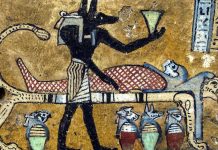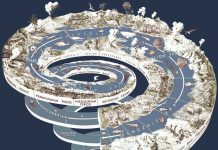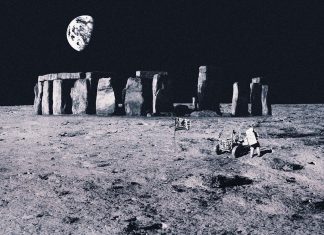A team of palaeontologists, including scientists from Monash University and Museum Victoria, has identified fossil evidence of the first-ever Australian spinosaur dinosaur. A neck vertebra found in Victoria sheds new light on the evolutionary history of the spinosaurs.
Published today in Biology Letters, this important discovery suggests that this group of ‘spine lizard’ dinosaurs once roamed the globe and were not restricted to a particular region, as previously thought.
Professor Patricia Vickers-Rich from Monash University explained that at the time the dinosaur lived, Australia was not isolated entirely from the rest of the globe.
“This challenges ideas that an endemic terrestrial fauna was present in Australia some 110-120 million years ago,” said Professor Vickers-Rich.
Dr Thomas Rich from Museum Victoria and Research Adjunct in the School of Geosciences at Monash said: “Spinosaurs were previously known to be from Europe, Africa and South America. The fact that they existed in Australia changes our understanding of the evolution of this group of dinosaurs.”
“The existence of the neck vertebra adds to the view that in the Early Cretaceous period, the dinosaur faunas found in many other parts of the world were also found in Australia.”
The presence of an Australian spinosaur in combination with recent discoveries of other dinosaur groups on this continent, previously thought to be restricted to the Northern Hemisphere, provides further evidence for the worldwide distribution of dinosaur faunas.
“The same groups of dinosaurs were widespread when the Earth was once a supercontinent,” said Dr Rich.
“When the earth evolved into separate continents, the various families of dinosaurs had already reached those landmasses, which explains why the same ones have been found in places now far apart from one another.”
The fossil was discovered by Michael Cleeland and George Casper near the Cape Otway Lighthouse in Victoria in 2005. The fossil was later identified by the paper’s lead author Dr Paul Barrett from the Natural History Museum in London. The analysis was carried out by Dr Barrett working in conjunction with co-author Dr Roger Benson of the University of Cambridge, Dr Rich and Professor Vickers-Rich.
Measuring around 4cm in length, the neck vertebra belonged to a small spinosaur around two metres long, which lived about 105 million years ago during the Early Cretaceous period.



































